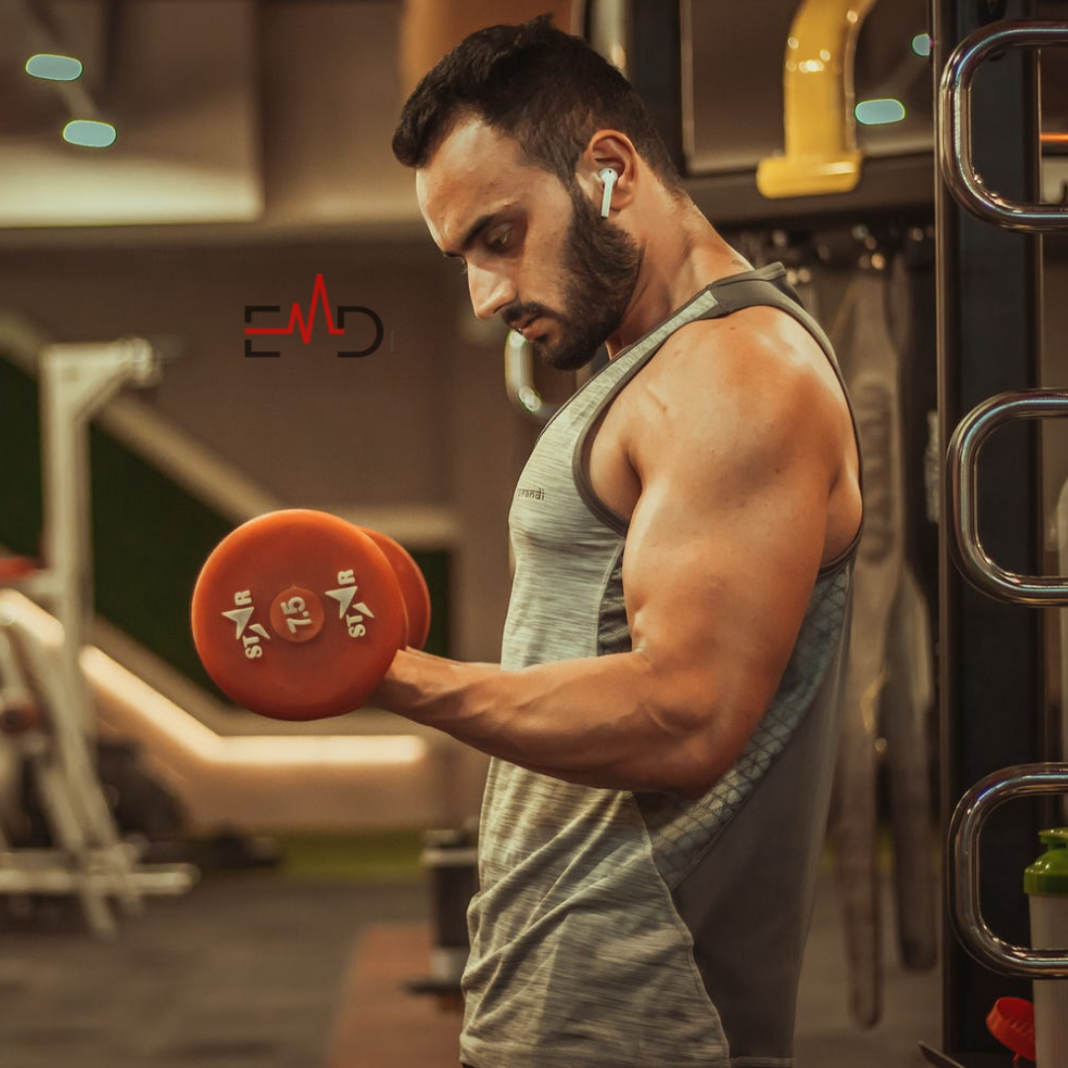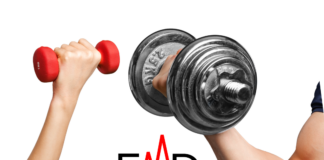Exercise Daily – Warming up and cooling down are two important parts of any exercise routine. Warming up prepares your body for physical activity while cooling down helps your body recover. Before you start your main exercise routine, it’s essential to warm up. Think of it as getting your body ready for action. During a warm-up, you engage in light exercises or movements that gradually increase your heart rate and circulation. Warming up and cooling down can help improve your performance, prevent injuries, and reduce muscle soreness.
What is a Warm-Up?
A warm-up is a series of exercises that gradually increase your heart rate and blood flow to your muscles. This helps to prepare your body for the more strenuous activity that is to come. A good warm-up should also include some dynamic stretches, which help to improve your range of motion and flexibility.
The Benefits of Warming Up
Warming up has several benefits, including:
- Improved performance: When warmed up, your muscles are more efficient and can produce more power.
- Reduced risk of injury: Warming up helps to loosen up your muscles and joints, which makes them less likely to be injured.
- Reduced muscle soreness: Warming up helps to increase blood flow to your muscles, which can help to reduce muscle soreness after exercise.
How to Warm Up
A good warm-up should last for about 5-10 minutes. It should start slowly and gradually increase in intensity. You can warm up with any exercise that gets your heart rate up and your blood flowing. Some good examples of warm-up exercises include:
- Light cardio, such as walking, jogging, or biking
- Dynamic stretches, such as arm circles, leg swings, and torso twists
What is a Cool-Down?
A cool-down is a series of exercises that gradually decrease your heart rate and blood flow to your muscles. This helps your body to recover from exercise and prevents muscle soreness. A good cool-down should also include some static stretches, which help to improve your flexibility.
The Benefits of Cooling Down
Cooling down has several benefits, including:
- Improved recovery: Cooling down helps your body to recover from exercise by gradually decreasing your heart rate and blood flow to your muscles.
- Reduced muscle soreness: Cooling down helps to remove lactic acid from your muscles, which can help to reduce muscle soreness after exercise.
- Improved flexibility: Static stretches, typically performed during a cool-down, can help improve your flexibility.
How to Cool Down
A good cool-down should last for about 5-10 minutes. It should start slowly and gradually decrease in intensity. You can cool down with any exercise that gets your heart rate down and your blood flowing. Some good examples of cool-down exercises include:
- Light cardio, such as walking, jogging, or biking
- Static stretches, such as holding a hamstring stretch or a calf stretch for 30 seconds
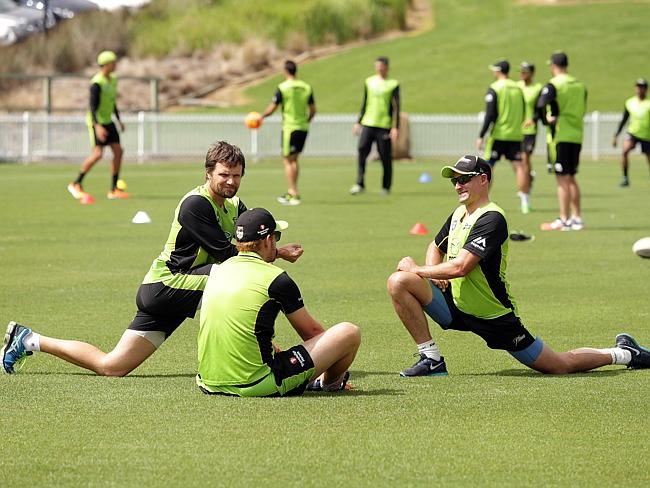
Warming Up and Cooling Down for Specific Activities
Different activities require different warm-ups and cool-downs. For example, if you are running, you will want to do a warm-up that includes light running and dynamic stretches, such as leg swings and arm circles. If lifting weights, you will want to warm up with light cardio and dynamic stretches, such as torso twists and shoulder rolls.
Here are some specific warm-up and cool-down tips for some popular activities:
Running
Start with leg swings and knee lifts to engage your lower body muscles. Light Jogging: Gradually increase your pace from a brisk walk to a light jog. Strides: Incorporate short sprints to activate fast-twitch muscle fibers. Slowly transition from running to walking to lower your heart rate. Static Stretches: Target your calves, hamstrings, and quadriceps with static stretches.
Weightlifting
Perform bodyweight squats and push-ups to engage major muscle groups. Light Resistance Bands: Use resistance bands for shoulder and hip mobility exercises. Barbell Warm-Up Sets: Start with light weights for a few sets of your main exercises. Spend a few minutes on a stationary bike or brisk walking to reduce muscle tension. Static Stretches: Focus on stretching the muscles you’ve worked, like the chest, back, and legs.
Yoga
Begin with deep breathing exercises to center yourself. Sun Salutations: Flow through a few sun salutations to warm the body. Joint Mobilization: Move through gentle joint rotations for added flexibility.
Wind down your practice with gentle poses like child’s pose and seated forward bends. Savasana: Finish with savasana (corpse pose) to relax your body and mind.
Swimming
Engage in light aerobic exercises like jumping jacks or stationary cycling. Shoulder Mobility: Incorporate arm circles and shoulder stretches to prepare for swimming motions. Swim Drills: Start with easy swim drills to gradually increase your heart rate.
Finish your swim session with slow, easy laps to cool down. Water-Based Stretches: Use the buoyancy of the water to perform gentle stretches for flexibility.
CrossFit
Begin with jump rope exercises to elevate your heart rate. Dynamic Movements: Include dynamic stretches like leg swings and arm circles. Specific Exercise Drills: Perform lighter sets of the exercises planned for your CrossFit workout. Use a foam roller to release muscle tension in key areas. Static Stretches: Focus on stretching major muscle groups worked during your session.
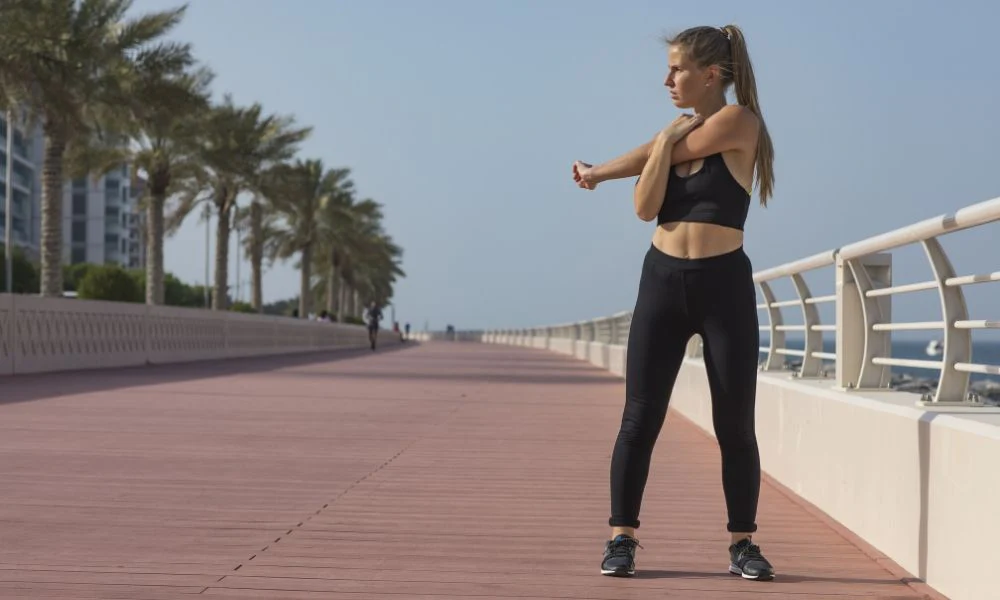
Benefits of Warming Up and Cooling Down for Athletes
Benefits of warming up
Warming up offers many benefits for athletes, including:
- Improved athletic performance: Warm and cold muscles are more efficient and powerful. This can improve performance in running, jumping, and throwing activities.
- Reduced risk of injury: Warm muscles are less likely to be injured than cold muscles. This is because warm muscles are more pliable and less prone to tearing.
- Increased mental focus and preparation: Warming up can help athletes mentally prepare for their workout or competition. By gradually increasing the intensity of their activity, athletes can focus their minds on the task at hand.
- Improved muscle temperature and blood flow: Warming up increases muscle flow. This brings oxygen and nutrients to the muscles, which can help improve performance and reduce fatigue.
Benefits of cooling down
Cooling down also offers several benefits for athletes, including:
- Reduced heart rate and blood pressure: Cooling down helps to reduce heart rate and blood pressure to pre-exercise levels gradually. This can help to prevent dizziness and lightheadedness.
- Improved circulation: Cooling down helps to improve circulation throughout the body. This can help to remove lactic acid from the muscles and improve muscle recovery.
- Removal of lactic acid: Lactic acid is a byproduct of muscle metabolism. It can cause muscle soreness and fatigue. Cooling down helps remove lactic acid from the muscles, improving recovery and reducing muscle soreness.
- Improved muscle recovery: Cooling down helps to improve muscle recovery by increasing blood flow to the muscles and removing lactic acid. This can help athletes recover from their workouts more quickly and prepare for their next session.
- Reduced risk of delayed-onset muscle soreness (DOMS): DOMS is a type of muscle soreness that can occur 24-48 hours after exercise. Cooling down can help to reduce the risk of DOMS by improving muscle recovery.
Warming Up for Team Sports
Your warm-up should be tailored to the sport’s specific needs if you play a team sport, such as basketball, soccer, or football. For example, if you are playing basketball, you will want to do a warm-up that includes dribbling, shooting, and passing drills. Team sports demand agility, speed, and coordination. A comprehensive warm-up routine is crucial to excel on the field or court.
Soccer
Start with a light jog to increase heart rate and follow it with footwork drills like ladder runs and quick direction changes. Dynamic Stretching: Perform dynamic stretches for your legs, hips, and torso. Ball Drills: Incorporate passing and dribbling drills to enhance ball control.
Basketball
Begin with jumping jacks and high knees to warm up your lower body. Ball Handling Drills: Incorporate ball-handling exercises to improve dribbling and shooting accuracy. Dynamic Stretches: Stretch your legs, arms, and shoulders with dynamic movements.
Volleyball
Start with a light jog and include plyometric exercises like jumping drills. Volleyball Skills Practice: Work on serving, passing, and hitting to enhance your volleyball skills. Dynamic Stretching: Focus on shoulders, back, and leg stretches.
Rugby
Engage in short sprints with your teammates to prepare for high-intensity bursts. Passing and Catching Drills: Practice passing and catching to improve ball-handling skills. Dynamic Warm-Up: Incorporate dynamic stretches for the entire body, including the neck and hips.
Basketball
Begin with jumping jacks and high knees to warm up your lower body. Ball Handling Drills: Incorporate ball-handling exercises to improve dribbling and shooting accuracy. Dynamic Stretches: Stretch your legs, arms, and shoulders with dynamic movements.
Hockey
Perform skating drills to get your legs moving and blood flowing. Puck Handling and Passing: Work on stickhandling and passing to enhance control. Dynamic Stretches: Focus on stretches for the legs, core, and upper body.
Ultimate Frisbee
Begin with a team jog and include quick frisbee throws. Agility Drills: Incorporate agility drills to improve lateral movements and cutting. Dynamic Stretching: Stretch the shoulders, hamstrings, and calves with dynamic stretches.
Basketball
Begin with jumping jacks and high knees to warm up your lower body. Ball Handling Drills: Incorporate ball-handling exercises to improve dribbling and shooting accuracy.
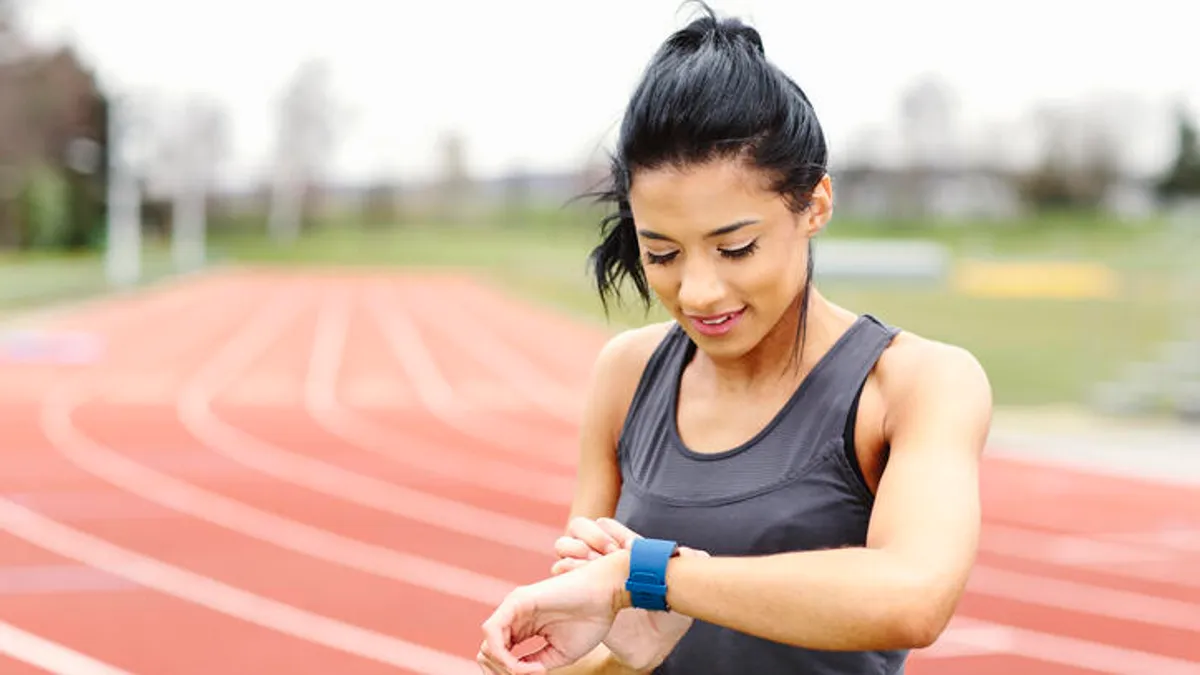
Warming Up for Individual Sports
If you play an individual sport, such as tennis, golf, or track and field, your warm-up should be tailored to the sport’s specific needs. For example, if you play tennis, you will want to warm up with hitting and footwork drills.
Common Mistakes to Avoid When Warming Up and Cooling Down
Here are some common mistakes to avoid when warming up and cooling down:
- Warming up too quickly: If you warm up too quickly, you are more likely to injure yourself. Start slowly and gradually increase the intensity of your warm-up.
- Warming up for the wrong activity: If you are going to be running, don’t warm up by lifting weights. Warm up by doing activities that are similar to the activity you are going to be doing.
- Cooling down too quickly: If you cool down too quickly, your heart rate and blood pressure will drop too suddenly. This can make you feel dizzy or lightheaded. Cool down slowly and gradually decrease the intensity of your cool-down.
- Skipping the cool-down entirely: The cool-down is as important as the warm-up. It helps your body to recover from exercise and prevents muscle soreness.
Tips for Warming Up and Cooling Down Effectively
Here are some tips for warming up and cooling down effectively:
- Stay hydrated: Drink plenty of water before, during, and after your workout.
- Listen to your body: Don’t push yourself too hard when warming up or cooling down. Stop if you feel any pain.
- Make it fun: Warming up and cooling down don’t have to be boring. Find activities you enjoy that will help you prepare for and recover from your workout.
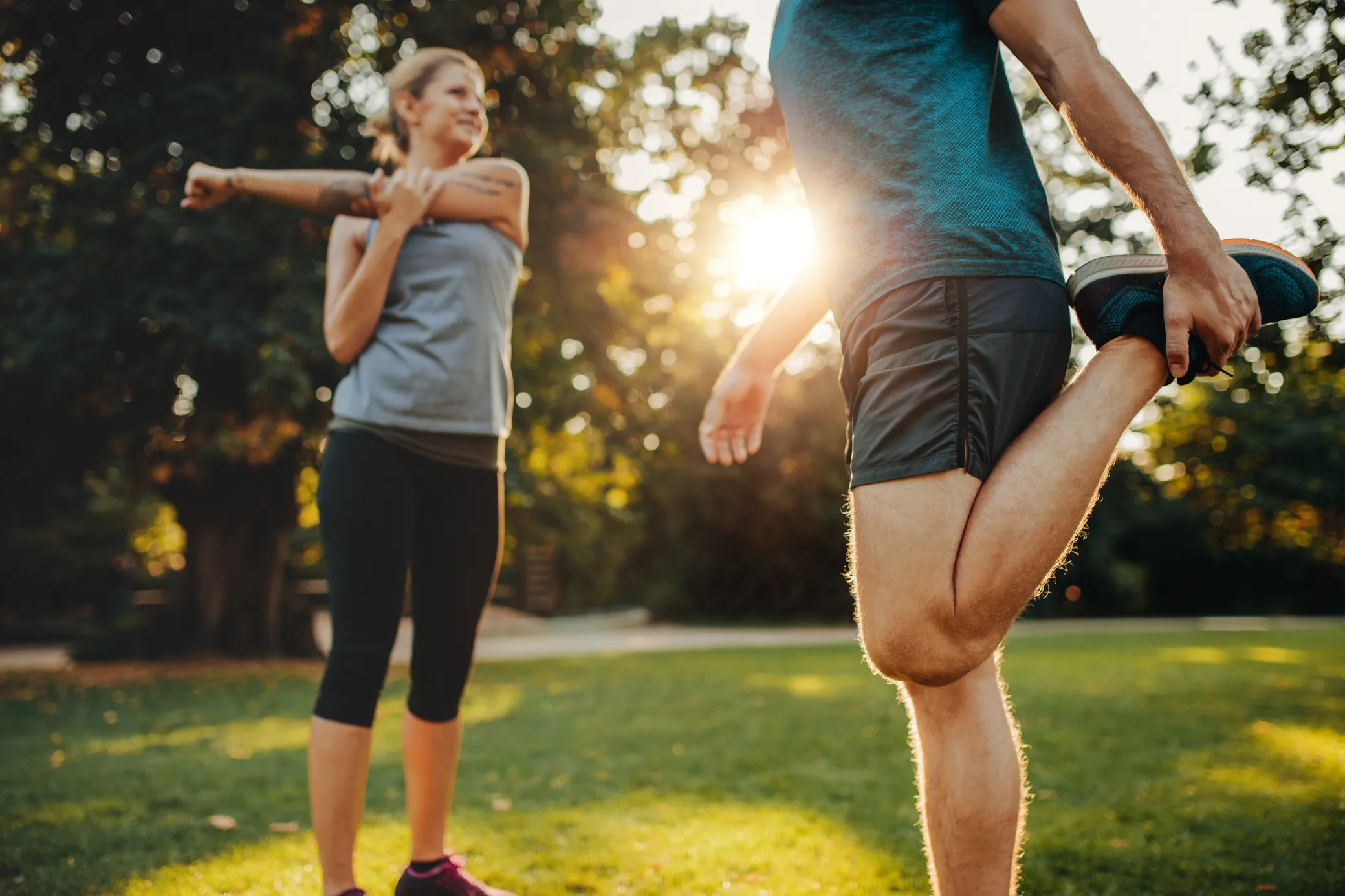
Conclusion
Incorporating warm-up and cool-down routines into your exercise regimen is crucial. Warming up effectively readies your body for physical activity, while cooling down aids recovery. These practices enhance performance and play a vital role in injury prevention and reducing post-workout muscle soreness.
FAQs – The Importance of Warming Up and Cooling Down
Q: How long should I warm up?
A: A good warm-up should last for about 5-10 minutes.
Q: How long should I cool down?
A: A good cool-down should also last 5-10 minutes.
Q: What should I do if I don’t have time to warm up or cool down?
A: Even if you don’t have time for a full warm-up or cool-down, doing something is still important. Here are a few quick tips:
- Warm-up: Do light cardio, walking or jogging for 5 minutes. Then, do dynamic stretches, such as arm circles and leg swings.
- Cool down: Walk for 5 minutes, then do static stretches, such as holding a hamstring or calf stretch for 30 seconds.
Q: Is it still important to warm and cool down if I only exercise lightly?
A: It’s still important to warmup and cool down, even if you only exercise lightly. Warming up helps to prepare your body for physical activity, even if it’s light. Cooling down helps your body to recover from exercise, even if it’s light.
Q: What are some examples of dynamic stretches?
A: Here are some examples of dynamic stretches:
- Arm circles
- Leg swings
- Torso twists
- Shoulder rolls
- High knees
- Butt kicks
- Walking lunges
- Leg raises
- Arm raises
- Leg cradles
- Arm cradles



